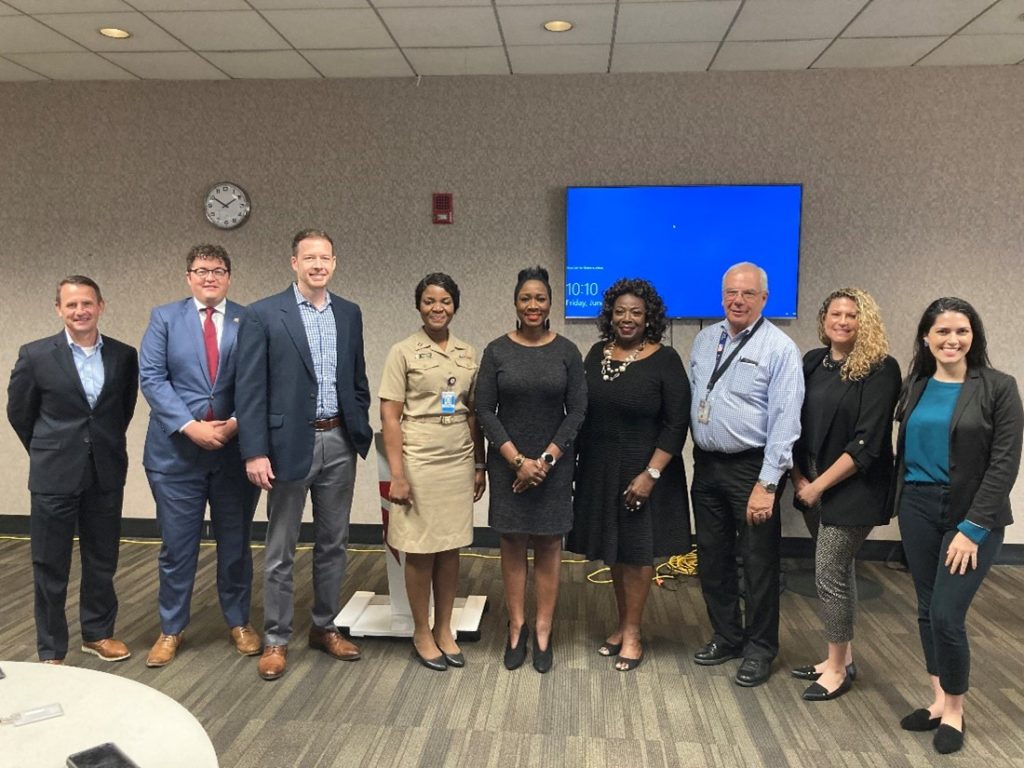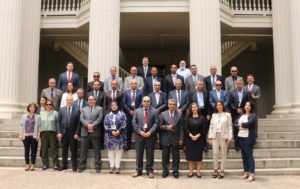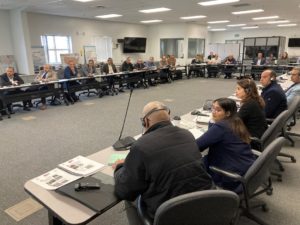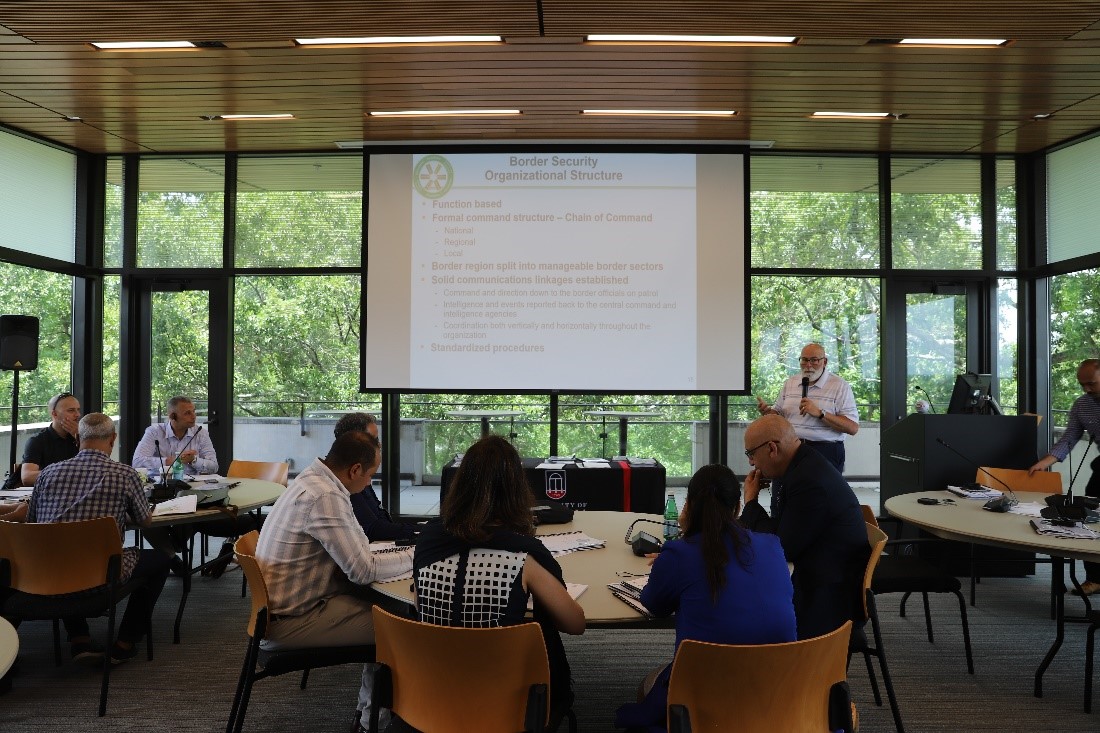 Border management tends to be siloed into specific areas of expertise, and countries tend to approach border security from a single-lens perspective. However, collaboration and communication are vital to successful border management. The Center for International Trade and Security (CITS) at the University of Georgia (UGA) hosted the inaugural Comprehensive Border Management Academy (CBMA) last month with the goal of training government officials to do just that.
Border management tends to be siloed into specific areas of expertise, and countries tend to approach border security from a single-lens perspective. However, collaboration and communication are vital to successful border management. The Center for International Trade and Security (CITS) at the University of Georgia (UGA) hosted the inaugural Comprehensive Border Management Academy (CBMA) last month with the goal of training government officials to do just that.
In collaboration with the Pacific Northwest National Laboratory (PNNL) and the U.S. Department of State (DOS), academy participants attended a twelve-day program that combined classroom learning with hands-on field training in the area of border management. Beginning in Athens, Georgia on UGA’s campus, the cohort then traveled to Hartsfield-Jackson Atlanta International Airport, and ended the experience at PNNL across the country in Richland, Washington. Justin Conrad, the Gary K. Bertsch Director of the Center for International Trade and Security and Associate Professor of International Affairs explains the significance of the program’s structure. “The idea is that participants will go back to their countries and not only have a greater appreciation for broad border management challenges but also see the benefit of working more closely with the other agencies in their countries.” 
The academy’s first graduating class welcomed a cohort that represented five North African countries- Algeria, Egypt, Libya, Morocco, and Tunisia. The delegation included experts with a broad range of backgrounds, such as border police, customs, gendarmerie, and foreign ministries- all who have a role to play in the security of their borders. By bringing in experts with unique perspectives, the idea is to collaborate on strategy and develop best practices. “Hopefully everyone will be more effective at contributing to the border management ecosystem,” explains Dr. Conrad.
The Academy
CBMA provided a three-tiered educational platform, beginning on campus at UGA in Athens, Georgia where they heard from experts on specific components of border management, such as infrastructure, equipment, and personnel. The purpose was to develop a more comprehensive view of border security, allowing participants a strategic lens for their border protection programs. Presenters included UGA faculty from the School of Public and International Affairs, private sector experts, PNNL staff, and experts from the Centers for Disease Control and Prevention (CDC).
The academy also emphasized strategic collaborations and cross-agency communication. Anyone that has a role to play in the security of their borders was welcomed, but the cohort included mid-to-senior ranking officials that were able to implement the strategies developed during the program. “We want to train them on strategic-level thinking for their border management, to include all relevant issues, such as human trafficking, refugees, political violence, disease and public health, and the proliferation of weapons of mass destruction” says Dr. Conrad. This comprehensive approach allowed participants to develop strategic oversight and get a birds-eye view of all their border management practices.
Participants worked with groups that included representatives from other countries, which opened dialogue and cultivated space for shared ideas. The exchange of experiences throughout the week allowed for information sharing and relationship building that had never before been done on this magnitude. By creating these multidimensional groups, the academy provided a framework for future collaborations as well. “By the end, they saw the value of working with folks from other countries and they began to talk offline after the academy concluded,” says Dr. Conrad. “It was incredible to see them develop friendships and continue those conversations.”
After completing the classroom training at UGA, the group traveled to Hartsfield-Jackson Atlanta International Airport to observe processes in action. The lessons they took from experts and their experiences shared from others within the cohort came together as participants saw how the world’s busiest airport manages border protection. They saw the entire process first-hand, and participants were able to view border security at all levels and from all directions. Perhaps the most important takeaway from the airport was the interagency collaboration that was on full display. Airport staff were joined by representatives from the Transportation Security Administration, Customs and Border Protection, the CDC, the City of Atlanta, and the Mayor’s Office of International Affairs. Participants saw firsthand the level of collaboration and cooperation that makes the airport so efficient.
experiences shared from others within the cohort came together as participants saw how the world’s busiest airport manages border protection. They saw the entire process first-hand, and participants were able to view border security at all levels and from all directions. Perhaps the most important takeaway from the airport was the interagency collaboration that was on full display. Airport staff were joined by representatives from the Transportation Security Administration, Customs and Border Protection, the CDC, the City of Atlanta, and the Mayor’s Office of International Affairs. Participants saw firsthand the level of collaboration and cooperation that makes the airport so efficient.
The academy ended with tactical training at the Pacific Northwest National Laboratory in Richland, Washington. Moving from a foundational understanding of border management, the team at the Hazardous Materials Management and Emergency Response Federal Training Center provided specific scenario-based training for members to observe and participate. One simulation included academy students participating in the identification, inspection, and confiscation of radioactive material from a vehicle. Providing strategic-level officials the opportunity to see what happens on the ground was invaluable and gave them a different perspective than many had ever seen. “It afforded decision-makers the opportunity to see how their choices will affect the officials on the ground and at their borders,” explains Dr. Conrad. This comprehensive, experiential approach allowed officials to understand the implications of their management decisions. Officials can now identify opportunities for improvements to current processes and an understanding of best practices for future policy development.
Academy and Training Expansion for CITS
CITS received generous funding for the academy through the State Department’s Bureau of International Security and Nonproliferation and the Export Control and Related Border Security (EXBS) program, which “seeks to prevent the proliferation of weapons of mass destruction and destabilizing accumulations and irresponsible transfers of conventional weapons by building effective national strategic trade control systems in countries that possess, produce, or supply strategic items, as well as in countries through which such items are most likely to transit.” CITS was chosen for this award because of the center’s experience in this area as well as the program’s model. “Our proposal was really unique- bringing participants to campus for a more traditional academic experience, to the busiest airport in the world, and then to PNNL for tactical training with actors and props, “explained Dr. Conrad. “It addressed many issue areas that are important for the U.S. government and the governments where our participants came from.” State Department staff were also on-site and provided operational support throughout the program.
PNNL was the other main partner hosting the academy. The lab, which is located in Richland, Washington has been a partner with UGA CITS for many years. The combined commitment to sustainable energy and national security make them an easy pair, with the work being done by each organization complementary to the other. “We have worked with them in the past, but this is much bigger than anything that has come before.” Conrad credits the success of the program to the coordination between CITS, DOS, and PNNL. “The program was a real success because of the clear, shared vision between three organizations.”
The Future of CITS Academies
Because of its success, CITS will be hosting the academy again next year with participants from the same five countries. New attendees will be admitted into the program, but the ongoing collaboration with this region will continue to expand the border management expertise in these countries. Dr. Conrad is optimistic that the academy will grow in future years, saying “Further down the road, we hope we can offer these academies for other regions and countries as well. For now, we are focusing on North Africa.”






